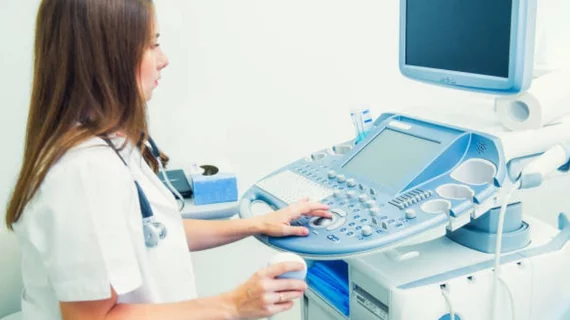Thromboembolic findings associated with COVID-19 can be identified on abdominal imaging findings, according to a new analysis published in the American Journal of Roentgenology. Radiologists—and even primary care providers—should consider the possibility of COVID-19 when such findings are revealed, even if that isn’t why the patient originally underwent imaging.
The authors performed a small retrospective analysis, comparing the abdominal ultrasound and CT results of 82 COVID-19 patients with 82 patients who didn’t have COVID-19. Overall, 11% of the COVID-19 cohort had thromboembolic findings. Just one patient from the non-COVID-19 group—who had known portal vein thrombus—had a thromboembolic finding.
“Hypercoagulability associated with COVID-19 may present with abdominopelvic or lower extremity arterial or venous thromboembolism,” wrote lead author Bari Dane, MD, department of radiology at NYU Langone Medical Center, and colleagues. “In our study, thromboembolic findings occurred more frequently in patients with than without COVID-19.”
Some providers may not yet know that arterial and venous thromboembolism in the abdomen have been associated with COVID-19, the authors observed. The more radiologists—and cardiologists, for that matter—that understand this detail, the more likely it is that patients undergoing these imaging exams can receive the best patient care possible.
“Radiologists should raise concern for COVID-19 when identifying thromboembolic abdominopelvic findings during this pandemic,” the authors concluded.
The team did note that its sample size was small. Another limitation was that all imaging exams were performed at a single institution.
Click here to read the full study.
Other recent studies exploring this association between COVID-19 and thromboembolism are available here and here.

